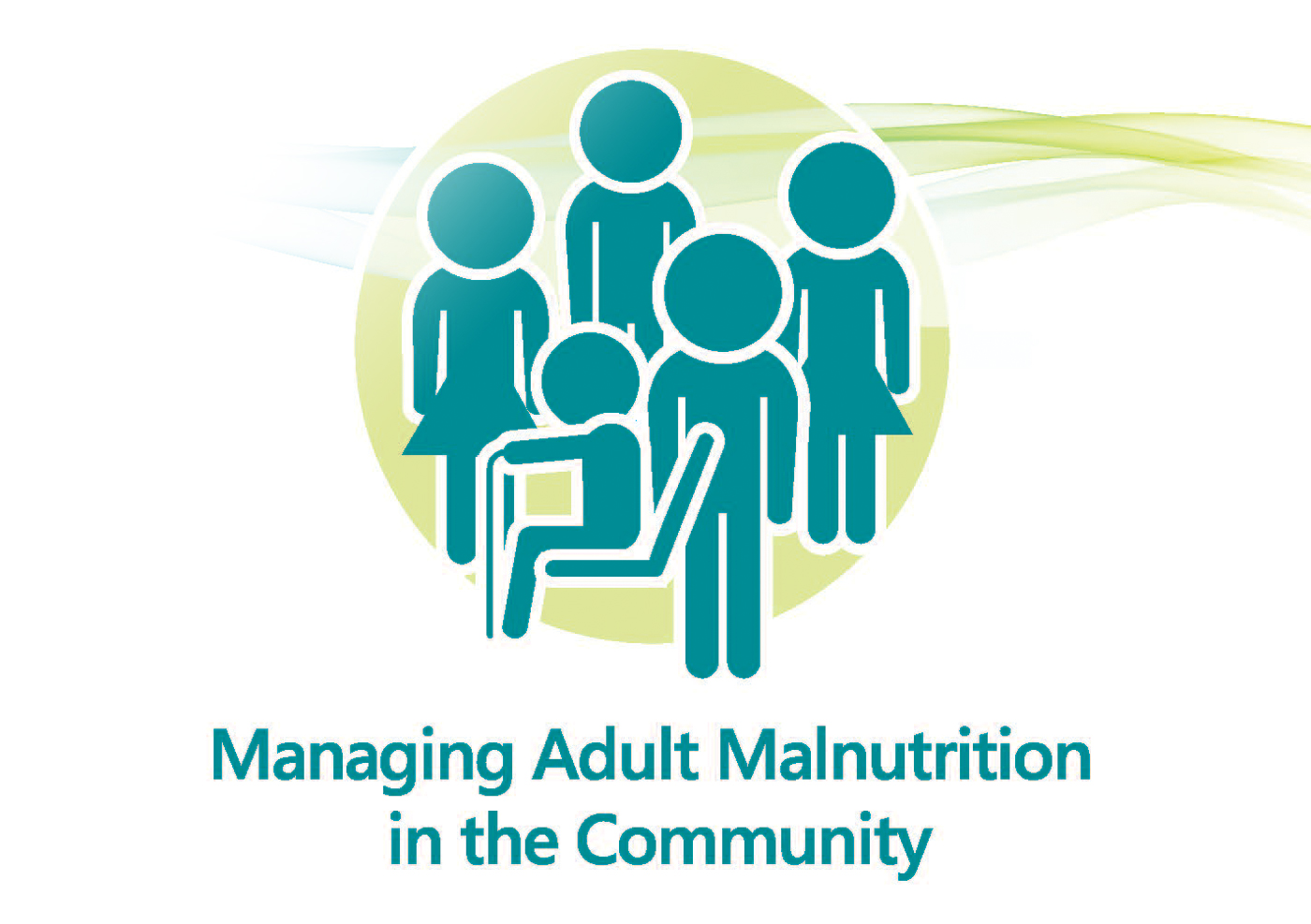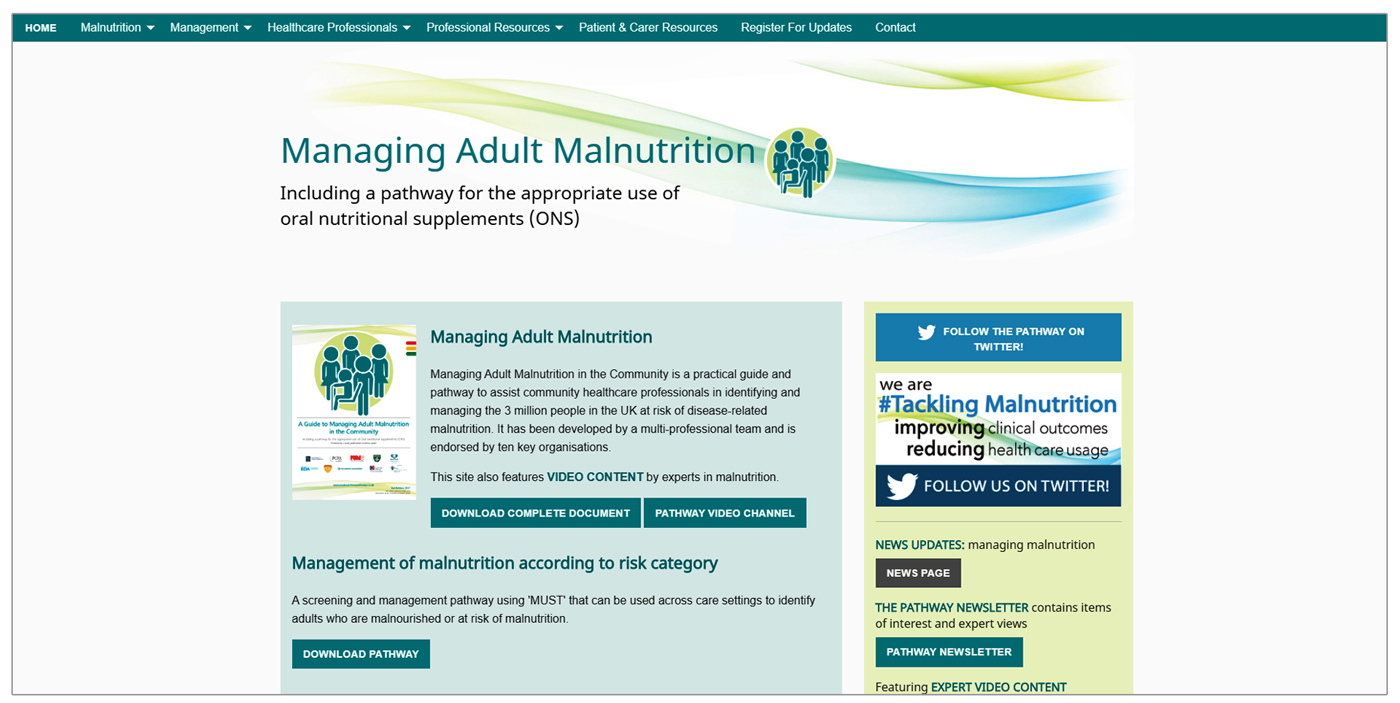 New Professional Materials from the Malnutrition Pathway
New Professional Materials from the Malnutrition Pathway
Since its launch in June 2012, the ‘Managing Adult Malnutrition in the Community’ website (www.malnutritionpathway.co.uk) has been visited by over 80,000 people, including professionals, patients and carers.
The site provides practical information on the identification and management of malnutrition and has been enhanced in recent years to include disease-specific sections and signposting to guide those visiting to the access the materials of greatest interest and relevance to them (there are now sections for patients and carers, dietitians, nurses, GPs, pharmacists, speech and language therapists and care homes).
A number of new resources have been developed and will appear on the website this Spring – these include:
- Top ten tips for implementing the pathway – separate sheets have been developed for dietitians, GPs, nurses, pharmacists, care homes and speech and language therapists. This series provides top tips to achieve integration of nutritional screening and care in current practice, the importance of reaching high risk groups and engaging with key stakeholders to implement the malnutrition pathway (see www.malnutritionpathway.co.uk/healthcare-index )
- Fact sheets for professionals to provide further insights, key knowledge and advice on specific areas of interest. Designed to be used in conjunction with the malnutrition pathway, there are fact sheets covering:
- Falls Prevention – this fact sheet focuses on the causes and clinical consequences of falls; the most frequent and serious type of accident arising in those aged 65 and over. It outlines the importance of nutrition, hydration and exercise in the treatment and prevention of falls and encourages a range of actions for care professionals to consider to make a difference in their locality.
- Dysphagia – this extensive fact sheet includes information on the cycle of malnutrition and dysphagia, key conditions where dysphagia is likely to be prevalent and advice on managing patients with dysphagia (including information on the IDDSI initiative). It also gives advice on monitoring nutritional intake of patients with dysphagia.
- Care Homes – targeted at the 11,300 care homes looking after around 410,000 residents in the UK, this fact sheet summarises red flags and key actions to tailor nutritional care of residents. It includes advice on team working, screening, meal times and the use of ONS – www.malnutritionpathway.co.uk/carehomes
“Keen to ensure that our website is a central, up-to-date source of information for healthcare professionals who are dealing with patients at risk of malnutrition, the Malnutrition pathway team have been working hard to develop resources in areas that professionals tell us they want more information on,” says Anne Holdoway, Consultant Dietitian and Chair of the Managing Adult Malnutrition in the Community panel. “I am delighted that in response to requests from users, we have been able to develop a range of materials and make them available free on the website, to assist carers, professionals and organisations to deliver good nutritional care. It’s also been great to hear from those making a difference who have kindly shared their activities in our Malnutrition Pathway newsletter and we would love to hear from all those working in this area of key developments or the need for new materials that would be of assistance to them.”
Professionals are encouraged to sign up for regular free updates (www.malnutritionpathway.co.uk/register-updates) and to share testimonials and best practice via the site – a £500 educational grant is available for information submitted and featured on the site (www.malnutritionpathway.co.uk/best-practice-enquiry).
Information on their activities and details of when new resources are put up on the website can be found via Twitter - #MNpathway

